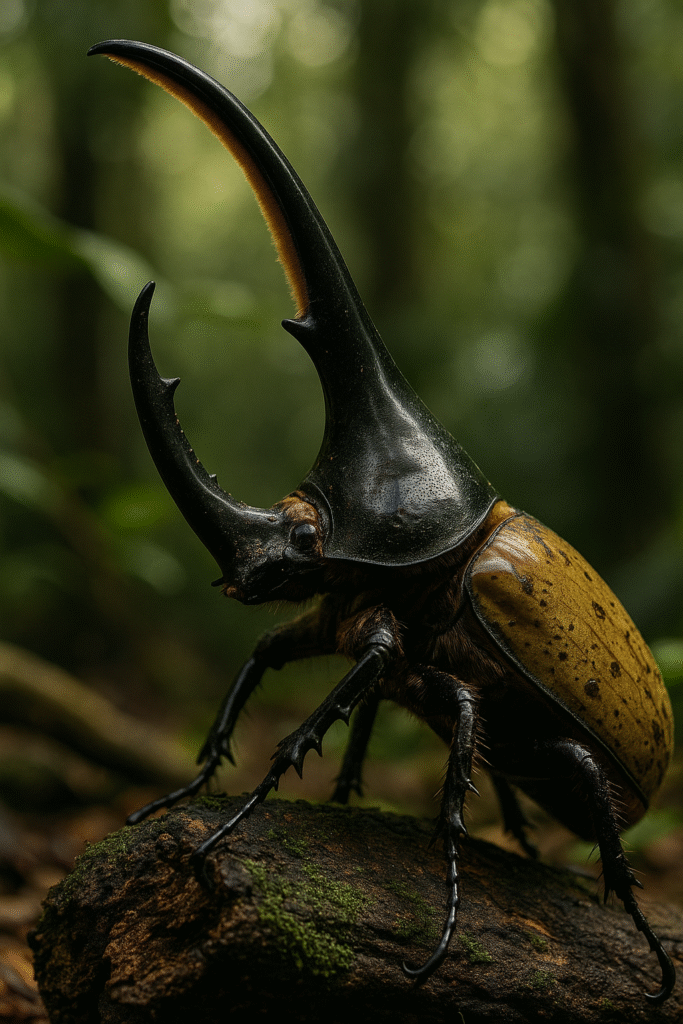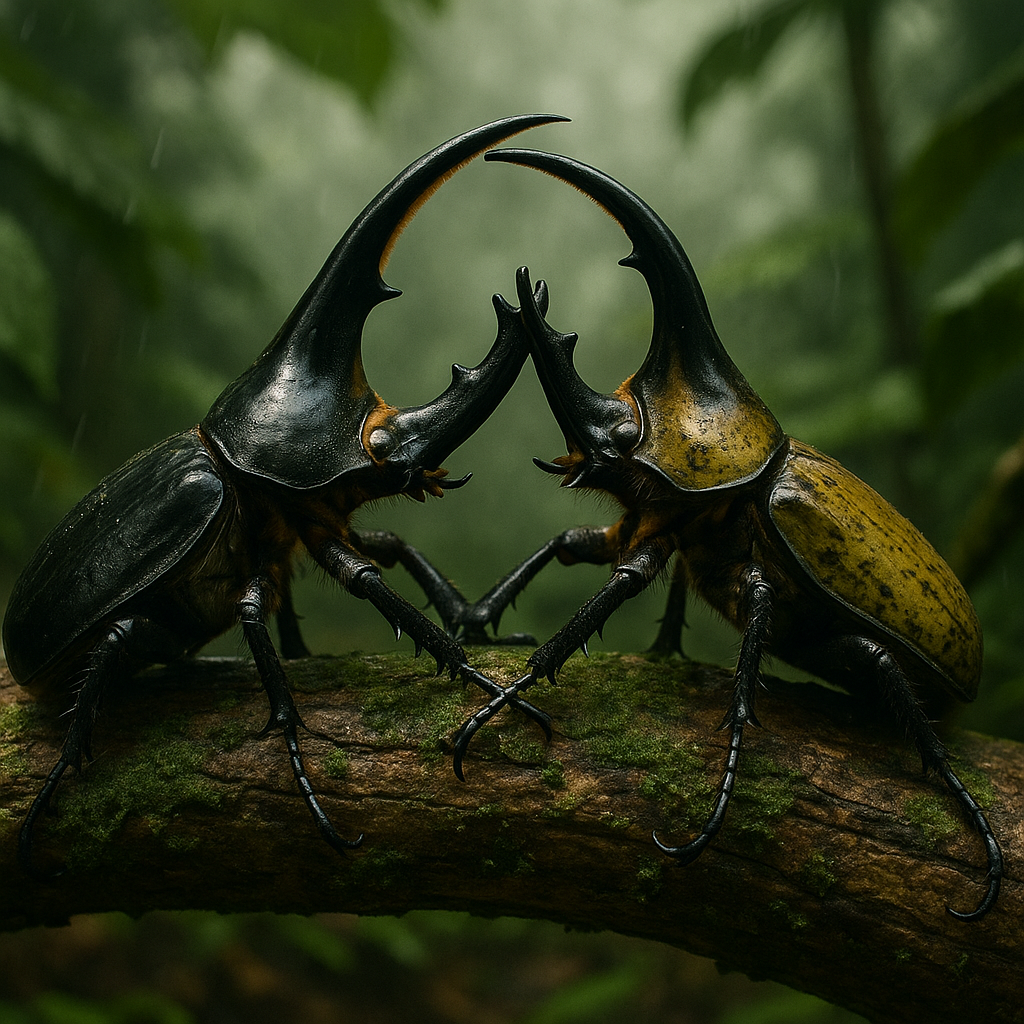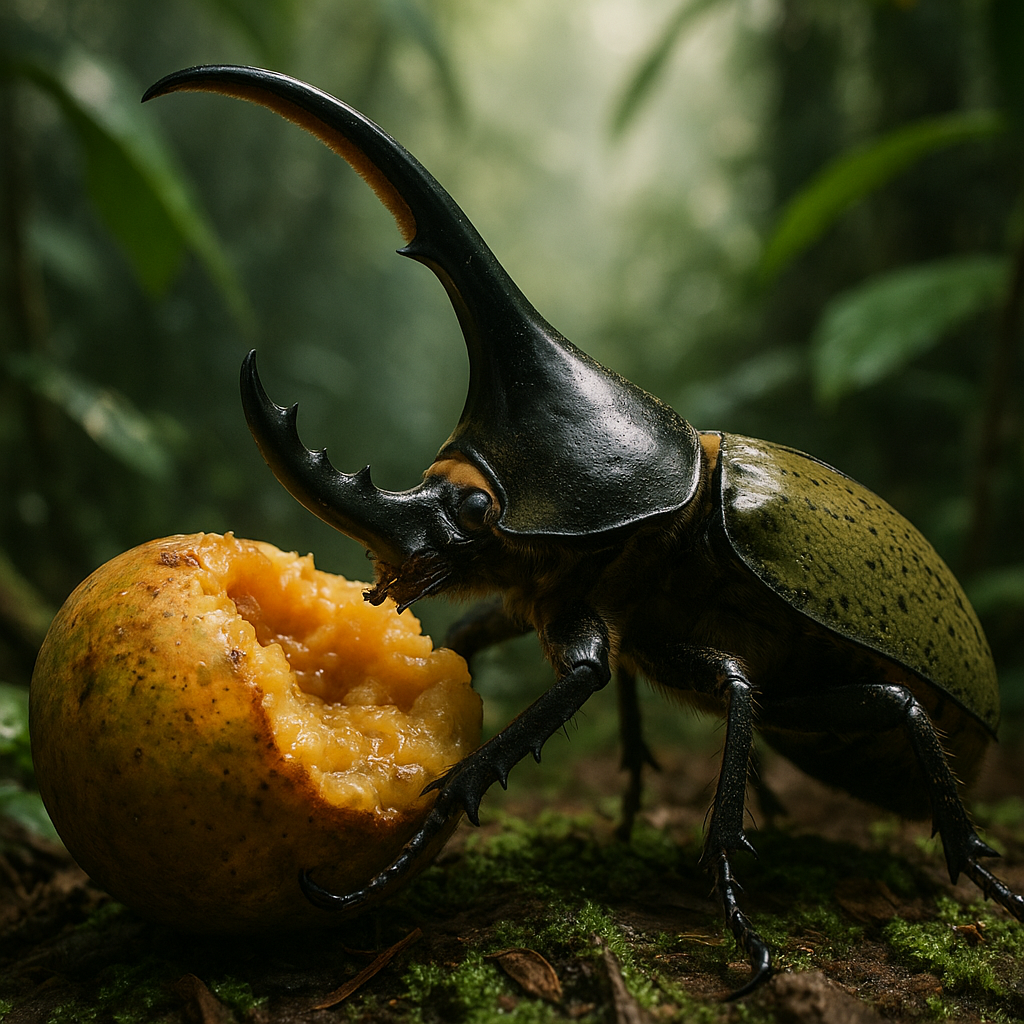In the dripping jungles of Central and South America, where rain hammers against broad leaves and orchids cling to branches like jeweled flames, there stirs a titan cloaked in armor. The Hercules Beetle (Dynastes hercules), named for the strongest of ancient demigods, is a paradox in miniature—an insect no longer than a human hand, yet able to lift weights more than 100 times its own body mass.

To encounter one is to question scale itself. Here, beneath the canopy, giants are not measured in meters but in force, persistence, and the strange poetry of survival.
A Living Relic of Strength
With a glossy, horned carapace that gleams like polished obsidian, the male Hercules beetle resembles a knight in full battle regalia. Its most striking feature is the pair of elongated horns—one arcing forward from its head, another from its thorax—that form a pincer nearly half its body length. These horns are not ornamental; they are weapons, used in gladiatorial combat for mates. Rival males grapple, heaving against each other with astonishing force until one is toppled from its perch.
Despite this violence, the beetle itself is not a predator. Its strength is wielded for access, not destruction. It feeds simply on rotting fruit and sap—sweet, decaying abundance that fuels its titanic frame.
Myths in Miniature
The Hercules beetle’s mythic name was no accident. Early naturalists, staggered by its size and force, likened it to the feats of the Greek hero who carried the heavens on his shoulders. In pre-Columbian cultures, too, horned beetles appear in art and symbolism as warriors, guardians, and avatars of natural resilience.

Even today, the beetle inhabits the realm of the surreal. In local lore, it is said that a Hercules beetle’s horns hold the spirits of ancestors—that when two males clash, the dead themselves wrestle for dominance in the forest’s twilight.
An Architect of Decay
Beneath the drama of its horns lies a quieter, essential role. The Hercules beetle helps recycle the rainforest’s lifeblood, breaking down fallen fruit and hastening the return of nutrients to the soil. In the damp darkness where fungi bloom and roots stretch for sustenance, the beetle is not warrior but architect—a small engine in the vast cycle of renewal.
Fragility of the Strongest
Yet, like so many rainforest giants, the Hercules beetle faces decline. Deforestation gnaws at its habitat, the slow erasure of the humid canopies it calls home. Poachers, too, have turned the beetle into commodity: its horns, its armor, its sheer size coveted in the exotic pet trade. For all its strength, the Hercules beetle cannot withstand the axe or the bulldozer.
Its paradox deepens: the strongest insect alive may prove one of the most vulnerable.
A Titan in Shadow
To see a Hercules beetle climb the trunk of a ceiba tree, horns arcing like a crown, is to glimpse something both primeval and eternal. It is not merely insect but symbol: of power balanced by fragility, of myth written in miniature.

In its armored frame, we find echoes of heroes and empires. In its patient recycling of decay, we see the forest’s endless cycle of death and rebirth. The Hercules beetle reminds us that even the mightiest depend on the fragile weave of ecosystems—and that true strength lies not in conquest, but in endurance.


Reply